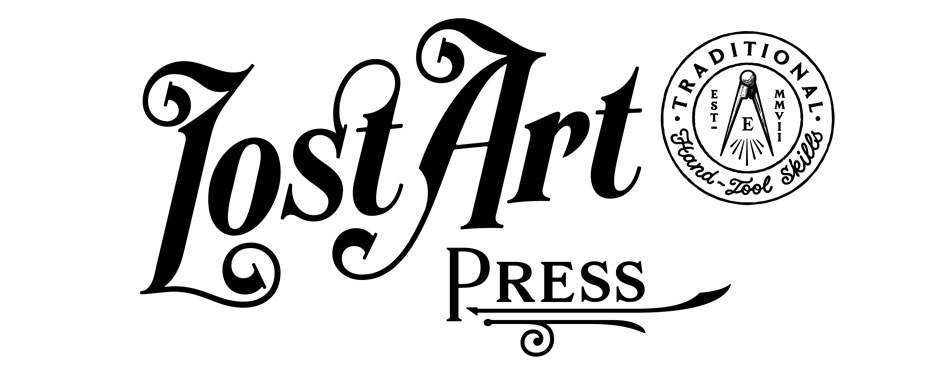
I wonder if Chris understood what he was unleashing when he first wrote about the Dutch Tool Chest. It’s the perfect blank canvas for woodworkers to exercise their ingenuity. Just a quick internet search will spill pages of configurations, colors, and creativity.
I’ve spent a lot of time thinking about DTC design and execution lately. This spring I’m co-teaching a class where students will build a version of the chest — but with a twist. My partner in crime is Thomas Latanè, one of the best blacksmiths working today, so the surprise spoiler is students will be both building the chest with me AND forging the hardware with Tom.
My influence for the project is easy to see but Tom’s comes from the tool chests that were attached to the sides of Conestoga wagons (a form curiously similar to the DTC). On many surviving pieces the strap hinge swings on a clenched staple as opposed to a standard barrel and pin. The example chest in the photo wears Tom’s vision for the hardware but there is opportunity for students to create something as complex or as simple as their skill set and time allows.
I’m really excited to be a part of this, it’s a wonderful handshake between two crafts that frankly ought to hang out together more often. The class will be divided into two, spending the morning with one instructor and trading to the other for the afternoon.
We’ve chosen to host the class at the picturesque Tunnel Mill Craft School just a few miles south of Rochester, Minn. Unlike many schools, they offer a dormitory bed and meals included in the price of tuition. After the official class time is over, it’s open campus where students can catch up in either area they feel they need to or just hang around the common room and enjoy the community.
Now the important stuff:
The class is May 2-5, and there are openings for only eight students this go around – so please don’t miss your chance. Dual skill classes are a rarity.
For pricing, booking, and questions email Carol Adams at jc-adams@msn.com or call 507-289-4189.
Derek Olson
Oldwolf Workshop Studio
See more of Tunnel Mill at http://www.tunnelmillcrafts.com/
See more of Thomas Latanè’s work at https://www.spaco.org/latane/TCLatane.htm


There are two kinds of people. Those who have their strap hinges curling outward, and those who have their strap hinges curling inward. It says a lot about a person.
Three kinds. Those whose strap hinges are curl-free.
Interesting . . .
“it’s a wonderful handshake between two crafts that frankly ought to hang out together more often.”
As someone who went from hand tool woodworking to blacksmithing and now bounces back and forth between them, this is great! I hope the response is epic and you have to schedule this class multiple times a year!
And some people prefer a rams horn hinge that curves in AND out.
I work in 17th and 18th century house restoration (and am a proud owner of a DTC).
You see the clenched staple hinge occasionally in older homes and especially barns. The pintle is the most common but in smaller applications like man-doors in barns or hook and eye latches.
How are the hinge staples fastened on the box pictured above? Seems like the could be clinched on the backside or you could put a (decorative) washer or plate over the end of the staple and rivet it.
Ken, you are correct, the staples pass through the double thick portion at the top and are clinched on the back side.
I’m afraid/ashamed to show my tool chest in public now.